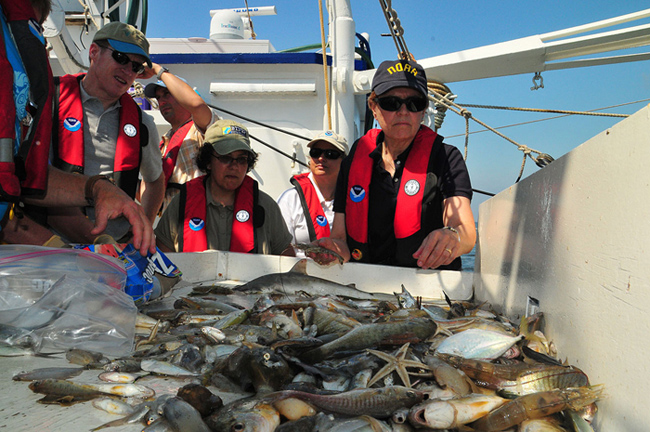Even as the Obama administration tries to encourage folks to eat more Gulf of Mexico seafood, health advocates on the Gulf Coast are calling into question the method federal agencies use to determine the food is safe.
The Federal Drug Administration, the National Oceanic and Atmospheric Administration and other agencies use an average level of seafood consumption to determine what level of pollutants would make a Gulf shrimp or oyster unsafe. Both agencies have declared Gulf seafood safe, as long as its taken from non-restricted areas.
But, according to a report released this month by the environmental non-profit Natural Resources Defense Council, the numbers the FDA uses for average consumption are far, far below the amount of seafood that the average Gulf Coast resident eats.
According to the NRDC’s survey, Gulf Coast residents eat between four and 12 times as much as the national average.
“It’s common knowledge that people in the Gulf love their seafood. When we think of food from the region we think of po-boys and gumbo, oyster bakes and jambalaya,” the NRDC said in a press release. “Yet despite this, FDA has been setting safety standards for cancer-causing chemicals based on nationwide seafood consumption rates — failing to take the uniqueness of the regional diet into consideration. And this is a problem, because it means that current FDA standards may also be failing to adequately protect many people in the Gulf.”
The report prompted the NRDC and a few dozen other Gulf Coast groups to send a letter to the FDA demanding it reassess its measurements.
The FDA says it’s reviewing the NRDC’s study.
“FDA is not aware of any published data upon which we can rely for seafood consumption figures other than what we used. When developing the mutually agreed upon reopening protocol we asked state regulators in the Gulf if they had any other data sources on seafood consumption rates and they were not able to provide any,” a spokeswoman told TPM.
“FDA will review the NRDC’s survey to determine if it is suitable as a source of consumption data and, if so, whether it would impact any of the safety conclusions drawn by the states and the federal government,” she said.
The government is, so far, standing by the numbers. A NOAA spokeswoman told the New Orleans Times-Picayune that the method they use is actually overly cautious.
The debate is one illustration of the tensions posed between helping out the fishermen, shrimpers and restaurants hit hard by the BP oil spill and making sure the seafood they’re selling is safe. President Obama has been pushing the seafood, serving a literal ton of it to White House guests at holiday parties. The Defense Department may also start feeding more Gulf seafood to its personnel — Navy Secretary Ray Maybus, who’s now the coordinator for the recovery, is urging Defense Secretary Gates to buy more seafood.









